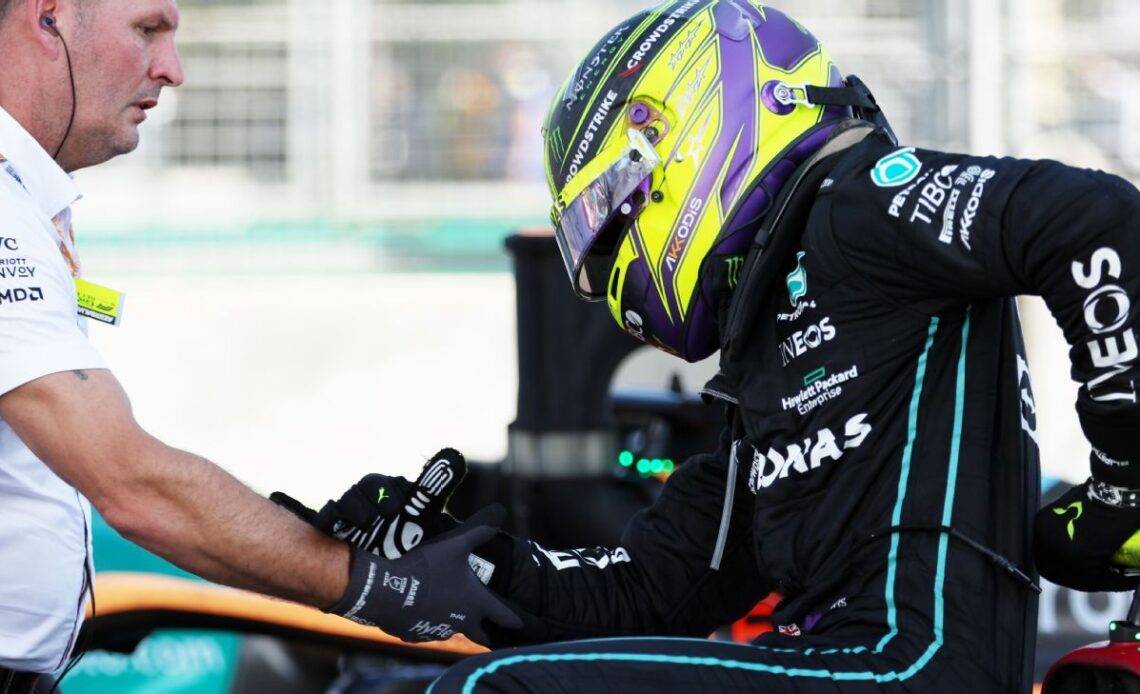Lewis Hamilton was clearly in pain as he parked his Mercedes F1 car after the Azerbaijan Grand Prix and gingerly lifted himself out. For the past 95 minutes, his body had taken a beating within the cockpit, with his back subjected to the full brunt of the car smashing into the track around Baku’s bumpy streets.
At more than 200 mph, the car was bouncing so hard on its suspension that Hamilton could barely spot his braking point for the first corner. Later in the lap, as he rounded Turns 18 and 19 at 180 mph, he had to second guess the movement of the car underneath him as it bottomed out and skated across the track surface.
A Mercedes engineer later revealed the compressions from the bouncing were registering at 6G (six times the force of gravity) through the car. As an isolated impact it wouldn’t be an issue — drivers regularly pull longitudinal forces of 5G under braking — but Hamilton was experiencing 6G in vertical loads at an extremely high frequency as he went down the pit straight on every lap during a 51-lap race.
“There were a lot of moments where I didn’t know if I was going to make it [to the end of the race],” Hamilton said. “One, whether I was going to keep the car on track, as on the high speed I nearly lost it several times. The battle with the car was intense.
“The thing was bouncing so much there were so many times I was nearly going into the wall, that was a concern safety wise, 180mph smashing into the wall. I don’t think I’ve ever really had to think about that as a racing driver, keeping it out of the wall at that high speed, very strange experience.
“That was the most painful race I’ve experienced, the toughest race I’ve experienced.”
The grand prix left Hamilton with bruising on his back, although he reassured followers on his social media the next day that it was “a little sore … but nothing serious.” He’s now preparing for more of the same at this weekend’s Canadian Grand Prix.
Hamilton wasn’t alone in experiencing the bouncing in Baku, but he seemed to suffer more than any other driver. As a result of changes to the regulations over the winter that have made the latest generation of F1 cars stiffer and more susceptible to an aerodynamic phenomenon known as porpoising, every driver has experienced some level of bouncing in the cockpit this season.
Ferrari’s Carlos Sainz was the first…
Click Here to Read the Full Original Article at www.espn.com – RPM…

